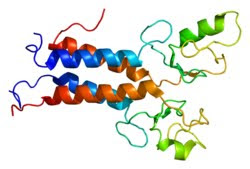Exercise!
The New Year has arrived with bushels of resolutions, top amongst them is “I will exercise!”
Okay maybe here might be some incentives for you.
- Exercise tones your body, sculpts your muscles and lubricates your joints and prevents the bone softening that come with age.
- The facts are simple. Use them or lose them. Muscles like the brain need to be fed with some repetitive resistance to develop memory. Just like the brain when it is fed with knowledge it grows in intelligence and wherewithal.
- Exercising the muscle leads to increasing the IGF-1Receptors that help store the glycogen within the muscle cells for use as energy. The higher the IGF-1R expressed by the muscle the less the Insulin floating around. Thus exercise leads to utilization of the consumed foods converted into sugars to be stored for use by the muscles. This leads to less sugar in the blood for insulin spikes.
- Excess sugar floating in the blood stream is converted into fat and stored in the adipose tissue. So the larger the storage the fatter the person. This ultimately leads to resistance to insulin and Voila Type II Diabetes mellitus happens.
- Of course the more unconverted sugars in the blood stream, the more filtration by the kidney and more sugar spills in the urine to the point that kidney damage results, ultimately leading to dialysis.
- And if that was not enough more sugars in the blood stream floating through the eyes leads to impairment of vision.
- And last but not least (since this is a simple primer) Excess sugars convert to triglycerides and those fatty molecules lining the arteries leads them to become rigid which leads to high blood pressure leading ultimately to strokes, heart attacks and other maladies that are not fitting for a New Year bloggersdom.
- Exercise results in a IGF-1R expression in the heart muscle too which leads to allowance for cardiac myocyte (heart cell) hypertrophy (Or physical exercise leads to a tougher heart) So in a sedentary individual there is limited if any IGF-1R protein presence and faced with “fight-or-flight” scenario such as body-builder coming at you with a sledge hammer the heart would not be able to expand to function at peak capacity for the potential induced stress and outrace itself into an arrythmia. That is why athletes have a resting heart rate much lower than non-athletes.
- If a sculpted “cool” body does not grab your attention let me try another approach that I know will get the point across: Cancer Cell
- Exercise leads to a lower death rate from Colon cancer.
- Exercise induces IGF-1R expression in patients with a specific type of Triple Negative Breast Cancer where those patient who had a higher expression of IGF-1R in their cells had a higher survival rate then those without. So exercise did make a difference in their survival and well-being.
- Women who exercised regularly had lowered risk of developing breast cancer. Exercise was preventative!
- Women who had breast cancer had a higher chance of increasing their overall survival and potentially cure.
- This will not come as any surprise to anyone, but exercise induces the flow of neuro-chemicals in the brain, which lead to a feeling of well-being. These chemicals are called “Endorphins.” The feeling of well-being leads to a positive outlook on life and changes the approach to life.
- Decision Making is on a moment-to-moment basis. We make decision at every level, at every turn of the screw and at every fork in the road. We survive through life living with the results of those decisions. Might it not be a good reason to make all decisions when we have a full score of endorphins circulating in our brains? Remember Charles Dickens he would walk the streets of London and those walks gave him the ideation of the Classics and the temper to toil writing such works as "Oliver Twist" and "A Christmas Carol".
- Exercise also implicated in reducing the risk of lung cancer in current or former women smokers.
- Exercise with diet rich in vegetables, fruits are also implicated in reducing the risk of Prostate Cancer in Men.
Okay, so get off the couch, turn the TV off, put away the glasses, put your sweats on and roll with the endorphins.
Wish you all a happy healthy and endorphin-rich-proper-decision-making-New-Year 2011!
References:
- Insulin-Like Growth Factor I Receptor Signalin is required for exercise induced Cardiac Hypertrophy, Jaetaek Kim et.al; Molecular Endocrinology 22 (11):2532-2543.
- Enhanced muscle insulin receptor autophosphorylation with short-term aerobic exercise training, J.F. Youngren et. al: Am J Physiol Endocrinol Metab (2001) 280: E528-33.
- Impact of physical activity on cancer recurrence and survival in patients with stage III colon cancer: findings from CALGB 89803, Meyerhardt JA et al. J Clin Oncol 2006 Aug1; 24(22): 3535-41 (Dana Farber Institute, Boston, MA)
- Tao MH, Shu XO, Ruan ZX, et al: Association of overweight with breast cancer survival. Am J Epidemiol 163:101-107, 2006.
- Bianchini F, Kaaks R, Vainio H: Weight control and physical activity in cancer prevention. Obes Rev 3:5-8, 2002
- Del Giudice ME, Fantus IG, Ezzat S, et al: Insulin and related factors in premenopausal breast cancer risk. Breast Cancer Res Treat 47:111-120, 1998
- Holmes MD, Chen WY, Feskanich D, et al: Physical activity and survival after breast cancer diagnosis. JAMA 293:2479-2486, 2005.
- The Association of Physical Activity with Lung Cancer Incidence in a cohort of Older Women: The Iowa Women’s Health Study. Sinner,P et. al. Cancer Epidemiol Biomarkers Prev 2006;15(12):2359–64.
- Evidence of Inhibitory effect of Diet and Exercise on Prostate Cancer Cell Growth. Tymchuck, CN et.al. Journal of Urology Vol 166 (3): Pages 1185-1189, September 2001












